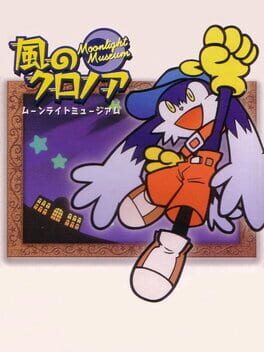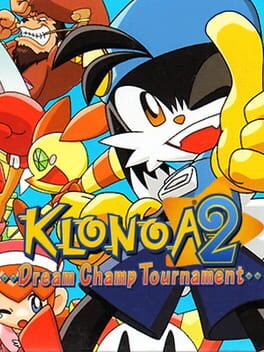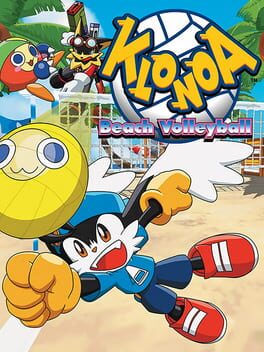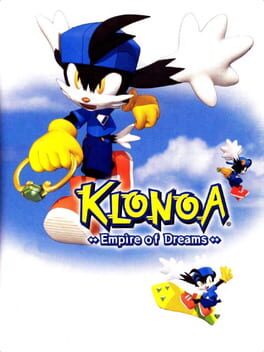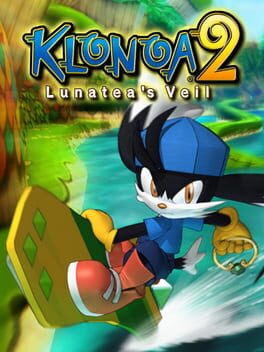

Klonoa and his friend Huepow come across a young crying girl who tells them that the moon has been divided into fragments and stolen by a mysterious group of artists that reside in the nearby Moonlight Museum. Determined to help, the duo rush off to the Museum's entrance, and once they come inside, they are greeted by a painter named Picoo who traps them inside a piece of artwork. Klonoa and Huepow must fight their way through five worlds within the Museum itself before finding the source of all their troubles and restoring the moon to the sky.
Also in series
Reviews View More
It's tough to expect a Japan only Wonderswan exclusive of a puzzle platformer series with an already small player base to get a ton of love, but wow - this game feels so unsung for what I expected on a 8-bit (color) platform.
I do agree with some of the other reviews I've seen that Moonlight Museum is definitely leaning toward the "easier" side of things. I would treat it (as I'm sure it was developed as such) as a predecessor to the GBA titles in both gameplay style and difficulty, as it tends to use much less mechanics in its levels comparatively as well. That said, its puzzles still feel incredibly rewarding to navigate through, and the last world still has a couple of moments that will give some pause to think.
Where Moonlight Museum shines however is the pixel art. I'm sure there's plenty of titles on the Game Boy as well that leave shock and awe, but never has a single color pixel art title leave me sitting on multiple screens, amazed at how someone was able to draw something so gorgeous. It absolutely looks stellar during the cutscenes, with the in-level graphics and music being just as great. The only miss the game has is the story - it's a bit all over and provides more fluff than not (tough to discern how much of that is the game vs. the available English fantranslation), even if it still provides plenty of charm.
The WonderSwan definitely tends to be a platform that's left to forgotten handheld lists or "weird game library" videos, but this is absolutely a gem of the platform more people need to experience.
I do agree with some of the other reviews I've seen that Moonlight Museum is definitely leaning toward the "easier" side of things. I would treat it (as I'm sure it was developed as such) as a predecessor to the GBA titles in both gameplay style and difficulty, as it tends to use much less mechanics in its levels comparatively as well. That said, its puzzles still feel incredibly rewarding to navigate through, and the last world still has a couple of moments that will give some pause to think.
Where Moonlight Museum shines however is the pixel art. I'm sure there's plenty of titles on the Game Boy as well that leave shock and awe, but never has a single color pixel art title leave me sitting on multiple screens, amazed at how someone was able to draw something so gorgeous. It absolutely looks stellar during the cutscenes, with the in-level graphics and music being just as great. The only miss the game has is the story - it's a bit all over and provides more fluff than not (tough to discern how much of that is the game vs. the available English fantranslation), even if it still provides plenty of charm.
The WonderSwan definitely tends to be a platform that's left to forgotten handheld lists or "weird game library" videos, but this is absolutely a gem of the platform more people need to experience.
“The moon shines brightly in shades of gray…”
Last year I played Klonoa: Door to Phantomile for the PS1 and really loved it. It had a great presentation, really fun, if a bit easy 2.5D platformer and probably one of the best stories I’ve seen for the genre. I wanted to play the sequel but sadly IDK when that’ll happen but it finally hit me. There was a game before Klonoa 2 which was Kaze no Klonoa: Moonlight Museum for Bandai’s WonderSwan. This was a Japan only handheld meant to compete with Nintendo but sadly even with a color variant, the handheld never was successful with the sales being about 3.5 million over the 4 years it was made in. Namco wouldn’t support the handheld too much with only Kosodate Quiz: My Angel, Tekken, Mr. Driller (color only) and Famista being the other series represented on the handheld that Namco developed. I do wonder why they used Klonoa for such an unpopular handheld but no more time for questions, time for the actual game.
Storytime in Moonlight Museum is done at the beginning and ending of each world and it’s about Klonoa and Huepow meeting this girl who tells them the moon has been broken apart and the artists near the Museum are up to no good. Klonoa and Huepow meet all of them and have their own damaged viewpoints on art and Klonoa has to find the fragments of the moon and teach the wrongdoings to the selfish artists. The plot is not as in depth as Klonoa 1 but this is a side story so it gets the job done though I don’t really feel too much from the story even if the images are very nice.
Now it’s time for that gameplay and we have a 2D game this time. Due to the primitive hardware, the .5 aspect of it is gone which is understandable. That’s not all, however, as the game is more puzzle-like than the first game. This was done due to the team wanting Klonoa 2 to be more action while Moonlight Museum would be more about the puzzles. It’s pretty smart when you think about it as it would not only fit the series but it would help design it for a handheld. Klonoa can still use the wind bullet and grab enemies to throw or jump in the air with the help of one. He can also still hover for a couple of seconds but the distance as for usual is pretty short and slow. You’ll be traveling through five visions (the game’s name for worlds) with six levels in each. You can also collect thirty Dream Stones in each level to fill in more of the artwork that represents the vision that you can then view in the gallery. Finally you need to collect three Star fragments to let you out of the level and move on to the next.
One really interesting aspect about the game is the use of horizontal and vertical viewpoints. Some levels require you to rotate the handheld as the screen is now more vertical letting you see more above you. It never feels jarring or bad which is quite impressive. Even cooler is if you beat a level and go back, you can pause and make the game flip the viewpoint so it can now be a horizontal or vertical view. I don’t think you get anything for doing them all the second way but it’s still interesting from a replayability standpoint. Makes me wonder if the whole game is designed well for both viewpoints.
When it comes to the puzzles themselves, it’s pretty varied as you’ll be messing with stuff like bombs, switches, enemies, and lots of blocks. There’s a lot here and the game likes to introduce more as you go through the game. Surprisingly it’s not too hard which I guess makes sense since Klonoa 1 was rather easy. You will probably almost never die in this game just because of how easy it is to keep your health at full with three hearts at most. Every room is basically a checkpoint and even better, you can just pause and click retry to reset a room and not just the whole level which is nice. Surprisingly it never really gets boring despite the levels never really doing anything unique outside of adding new general mechanics. The only notable gripe I had was Klonoa being kind of slow making the bits of nothing feel kind of draining at times. I was amazed how nothing really stumped me, I’m not sure if it’s just that easy or maybe I underestimate my thinking skills but you probably won’t need a guide for any part of the game. It also keeps the enemy respawns from the PS1 original which helps if you make any screw ups.
The bosses in this game are…well actually there are no bosses. Yeah not even at the end there is one. Kind of weird but guess since the game isn’t about combat, they just aren’t here at all. That said, there is still content to do after the fifth vision and credits. You get six extra levels and surprisingly the first two feel like actual platforming which took me by shock, they even keep track of your best time. They’re pretty fun too which makes me kind of sad there isn’t more. The other ones test your reflexes and timing with the final two having the hardest puzzles in the game. Still they aren’t too tough and by now they really love giving you lives so you’ll be fine. Finish this world and you’ll get a new ending cutscene though there seems to be no 100% award which is a shame unless what I got was it because I did 100% every level on the first go around. Still it’s probably my favorite world in the game and a nice way to end off the game. Though Namco what was up with basically reusing a room in the last level? Feels very off to do it that one time.
Graphically Moonlight Museum looks pretty nice for the handheld. Now granted I’m no expert on the handheld but there’s some nice visuals and combined with the more unique feeling themes like a prison, it really makes the game stick out from the rest of 2D platformers from that era. My only nitpick is I don’t like how inflated enemies don’t squish down when on a lower ceiling. I also really like how Vision 5 looks with the moving background really giving a lovely night view. I mentioned it earlier but the cutscenes look nice too along with the gallery images. The music by Junko Ozawa & Hiromi Shibano is a mixed bag. Some songs don’t sound too bad but my god the Giant Fort and Laughing Prison themes are so repetitive that after six levels, you’ll go insane. Some of the other tracks sound decent with my favorite being the Palace of Clouds theme. Klonoa’s voice clips from the first game are also here and sound nice though they aren’t perfect as expected. Overall it looks good but needs some better songs which is a shame considering how good the music was in the previous game.
This game was hard for me to rate because it has some good stuff going for it like the fun puzzles and just being a fun chill experience. Though it can feel slow at times, the biggest issue for me and it’s not really the game’s fault but it just can’t compete on what made the previous game so great. I understand the struggles and I’m glad they did what they could to make this a fun experience but I could see this game being boring for some. If you like these levels that have you roaming around, solving puzzles, finding keys and fragments, and just not fighting bosses then you’ll have a good time. A fan translation does exist and it’s pretty high quality but language barrier isn’t an issue anyway so if you haven’t played this yet and are curious then have a go at it. This side of Klonoa would continue on the GBA but I won’t redo that review for a while. It was a nice 5 hour journey and I’m glad I gave it a chance, hoping Klonoa 2 will be fun whenever I somehow if ever can get the chance to play it. Bye for now!
Last year I played Klonoa: Door to Phantomile for the PS1 and really loved it. It had a great presentation, really fun, if a bit easy 2.5D platformer and probably one of the best stories I’ve seen for the genre. I wanted to play the sequel but sadly IDK when that’ll happen but it finally hit me. There was a game before Klonoa 2 which was Kaze no Klonoa: Moonlight Museum for Bandai’s WonderSwan. This was a Japan only handheld meant to compete with Nintendo but sadly even with a color variant, the handheld never was successful with the sales being about 3.5 million over the 4 years it was made in. Namco wouldn’t support the handheld too much with only Kosodate Quiz: My Angel, Tekken, Mr. Driller (color only) and Famista being the other series represented on the handheld that Namco developed. I do wonder why they used Klonoa for such an unpopular handheld but no more time for questions, time for the actual game.
Storytime in Moonlight Museum is done at the beginning and ending of each world and it’s about Klonoa and Huepow meeting this girl who tells them the moon has been broken apart and the artists near the Museum are up to no good. Klonoa and Huepow meet all of them and have their own damaged viewpoints on art and Klonoa has to find the fragments of the moon and teach the wrongdoings to the selfish artists. The plot is not as in depth as Klonoa 1 but this is a side story so it gets the job done though I don’t really feel too much from the story even if the images are very nice.
Now it’s time for that gameplay and we have a 2D game this time. Due to the primitive hardware, the .5 aspect of it is gone which is understandable. That’s not all, however, as the game is more puzzle-like than the first game. This was done due to the team wanting Klonoa 2 to be more action while Moonlight Museum would be more about the puzzles. It’s pretty smart when you think about it as it would not only fit the series but it would help design it for a handheld. Klonoa can still use the wind bullet and grab enemies to throw or jump in the air with the help of one. He can also still hover for a couple of seconds but the distance as for usual is pretty short and slow. You’ll be traveling through five visions (the game’s name for worlds) with six levels in each. You can also collect thirty Dream Stones in each level to fill in more of the artwork that represents the vision that you can then view in the gallery. Finally you need to collect three Star fragments to let you out of the level and move on to the next.
One really interesting aspect about the game is the use of horizontal and vertical viewpoints. Some levels require you to rotate the handheld as the screen is now more vertical letting you see more above you. It never feels jarring or bad which is quite impressive. Even cooler is if you beat a level and go back, you can pause and make the game flip the viewpoint so it can now be a horizontal or vertical view. I don’t think you get anything for doing them all the second way but it’s still interesting from a replayability standpoint. Makes me wonder if the whole game is designed well for both viewpoints.
When it comes to the puzzles themselves, it’s pretty varied as you’ll be messing with stuff like bombs, switches, enemies, and lots of blocks. There’s a lot here and the game likes to introduce more as you go through the game. Surprisingly it’s not too hard which I guess makes sense since Klonoa 1 was rather easy. You will probably almost never die in this game just because of how easy it is to keep your health at full with three hearts at most. Every room is basically a checkpoint and even better, you can just pause and click retry to reset a room and not just the whole level which is nice. Surprisingly it never really gets boring despite the levels never really doing anything unique outside of adding new general mechanics. The only notable gripe I had was Klonoa being kind of slow making the bits of nothing feel kind of draining at times. I was amazed how nothing really stumped me, I’m not sure if it’s just that easy or maybe I underestimate my thinking skills but you probably won’t need a guide for any part of the game. It also keeps the enemy respawns from the PS1 original which helps if you make any screw ups.
The bosses in this game are…well actually there are no bosses. Yeah not even at the end there is one. Kind of weird but guess since the game isn’t about combat, they just aren’t here at all. That said, there is still content to do after the fifth vision and credits. You get six extra levels and surprisingly the first two feel like actual platforming which took me by shock, they even keep track of your best time. They’re pretty fun too which makes me kind of sad there isn’t more. The other ones test your reflexes and timing with the final two having the hardest puzzles in the game. Still they aren’t too tough and by now they really love giving you lives so you’ll be fine. Finish this world and you’ll get a new ending cutscene though there seems to be no 100% award which is a shame unless what I got was it because I did 100% every level on the first go around. Still it’s probably my favorite world in the game and a nice way to end off the game. Though Namco what was up with basically reusing a room in the last level? Feels very off to do it that one time.
Graphically Moonlight Museum looks pretty nice for the handheld. Now granted I’m no expert on the handheld but there’s some nice visuals and combined with the more unique feeling themes like a prison, it really makes the game stick out from the rest of 2D platformers from that era. My only nitpick is I don’t like how inflated enemies don’t squish down when on a lower ceiling. I also really like how Vision 5 looks with the moving background really giving a lovely night view. I mentioned it earlier but the cutscenes look nice too along with the gallery images. The music by Junko Ozawa & Hiromi Shibano is a mixed bag. Some songs don’t sound too bad but my god the Giant Fort and Laughing Prison themes are so repetitive that after six levels, you’ll go insane. Some of the other tracks sound decent with my favorite being the Palace of Clouds theme. Klonoa’s voice clips from the first game are also here and sound nice though they aren’t perfect as expected. Overall it looks good but needs some better songs which is a shame considering how good the music was in the previous game.
This game was hard for me to rate because it has some good stuff going for it like the fun puzzles and just being a fun chill experience. Though it can feel slow at times, the biggest issue for me and it’s not really the game’s fault but it just can’t compete on what made the previous game so great. I understand the struggles and I’m glad they did what they could to make this a fun experience but I could see this game being boring for some. If you like these levels that have you roaming around, solving puzzles, finding keys and fragments, and just not fighting bosses then you’ll have a good time. A fan translation does exist and it’s pretty high quality but language barrier isn’t an issue anyway so if you haven’t played this yet and are curious then have a go at it. This side of Klonoa would continue on the GBA but I won’t redo that review for a while. It was a nice 5 hour journey and I’m glad I gave it a chance, hoping Klonoa 2 will be fun whenever I somehow if ever can get the chance to play it. Bye for now!
